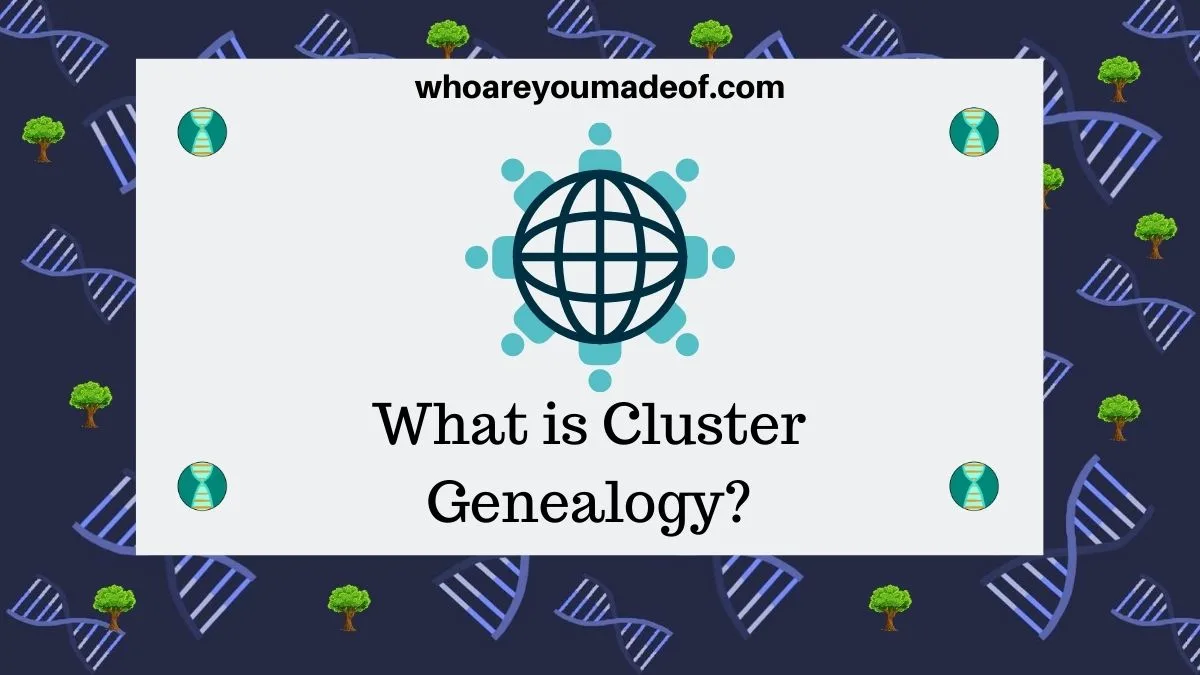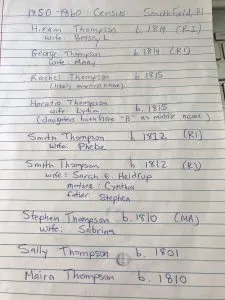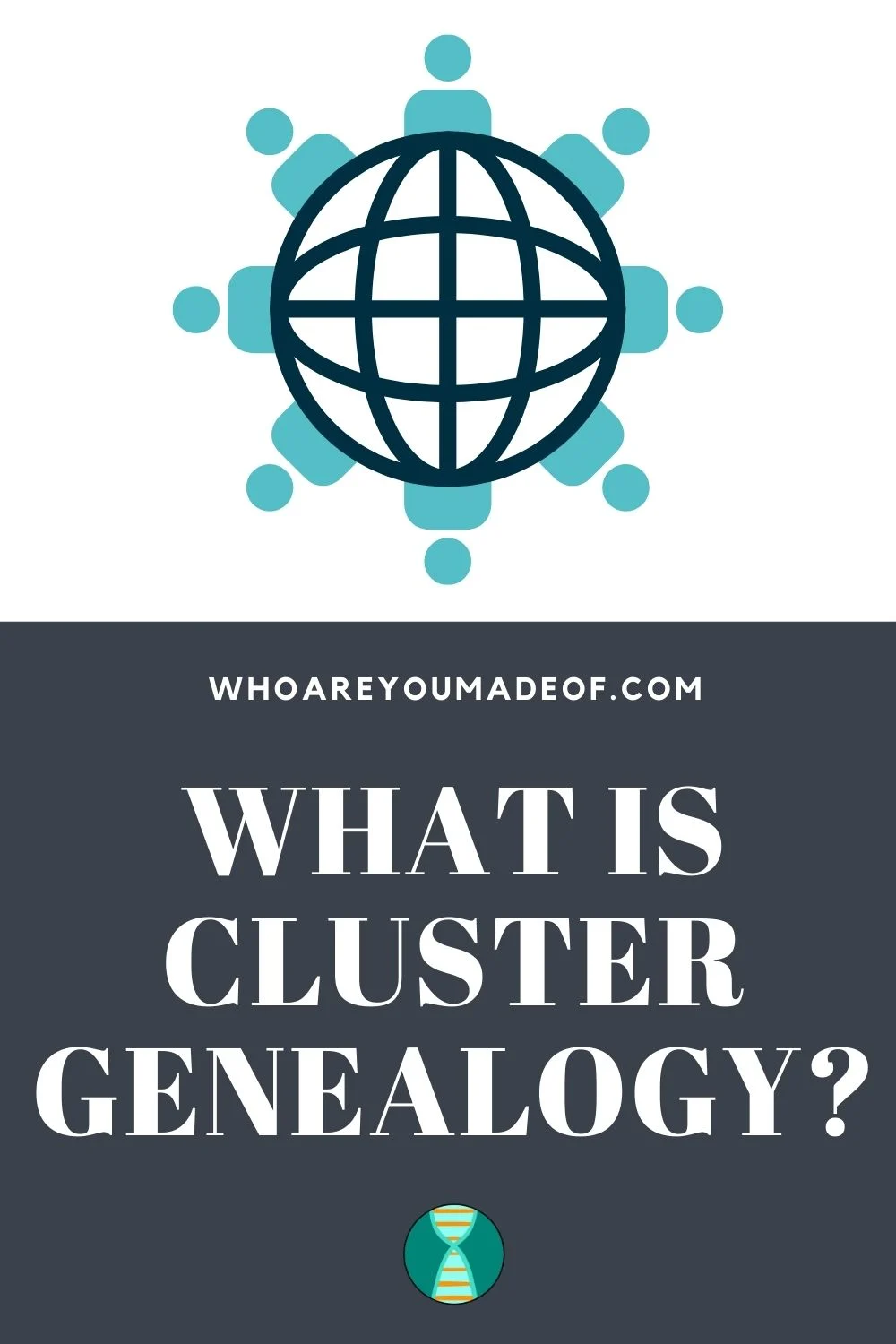Do you want to learn how to use cluster or collateral genealogy? This research strategy can help you solve the toughest family tree mysteries and identify ancestors.
Most people arrive at the idea of cluster genealogy after they have already performed hours of exhaustive searches of records and indexes. They feel that they have reached the end of a line of their family tree.

Even when we can't find out who our ancestor's parents were, we know they had parents. Of course they had parents - everyone does.
They also had siblings, aunts, uncles, and even cousins. These blood relatives who we are not descended from, are called collateral relatives.
These collateral relatives are where we begin the discussion of cluster genealogy research. For this post, I will walk you through an example of a cluster research that I'm doing for my own family tree.
What is cluster genealogy research
The cluster genealogy research strategy involves identifying your ancestor's collateral relatives, including siblings, aunts, uncles, and cousins. The "cluster" that you create can help you get a better picture of your ancestor's life, give you ideas about where you might be able to look for records, and help you solve tough family tree mysteries.
Sometimes, your cluster is theoretical. For example, you might research all members of the community with your ancestor's surname in order to identify who he might have been related to in the cluster.
You may also include neighbors and other members of the community who might have interacted with your ancestor the cluster that you develop. Any person who could shed light on your ancestor's daily life is someone who can potentially reveal key details about your ancestor.
The cluster genealogy research method is pretty exciting. Basically, you are reconstructing your ancestor's family and community using traditional genealogy research.
I have been stuck on one of my great-great-great-great grandfathers. His name is William B Thompson and he was born about 1814 in Rhode Island.
Lots of public family trees on Ancestry have misidentified his parents as a couple who were born and lived out their entire lives in Massachusetts. I can find no evidence that they ever lived in Rhode Island, where my ancestor was born and lived his entire life.
I have decided to employ the cluster genealogy research method. Since I don't know much about him except for where he was born, I am going to research everyone with the last name Thompson who lives in his small town who was born around the same time that he was.
Which relatives are important for cluster research?
The more people that you can include in your cluster research, the better. This means that all relatives could potentially be added to the cluster, improving the odds that you are able to discover something new about your ancestor.
If you don't know who your ancestor's relatives are, then you should include as many people as possible from the town where they live (or where they were born) that share their surname, their mother's surname, or even their spouse's surname.
This is exactly what I did for my Thompson ancestor. I believe that he was born in Smithfield, Providence, Rhode Island, and so I researched all of the Thompsons who were also born there near the beginning of the 1800s.
I did some research about the size of Smithfield in the early 1800s and discovered that there were only about 3,800 residents in 1810. There is a good chance that some of the Thompsons living there around that time are also my Thompsons.
The bigger your cluster, the more work you have ahead of you. That's okay, however, because genealogy is fun.
How to locate collateral relatives
There are many ways to locate collateral relatives for your cluster genealogy project. Census records and city directories are a great place to start.
For the example for this project, I used the Ancestry search feature to locate people who were born in Smithfield, Rhode Island, between 1810-1815. My idea is that some of these individuals could be siblings or cousins.
For the search terms, I only include a surname (Thompson), date of birth, and state of birth.
I love writing things down on paper, so I just jotted these names down on a sheet of paper. As I research them, I will add them to my genealogy notebook.

While I plan to research the entire cluster of potential ancestors for William B Thompson, I was intrigued by one person who showed up on the list. Horatio Thompson, born about 1815 in Rhode Island, had a son with "B" as the middle name.
This is just like my ancestor's middle name. A family naming tradition, perhaps?
I'm going to start with Horatio to see if I can find out.
How to do cluster genealogy research
To do cluster genealogy research, you will try to learn all that you can about the people who are in your ancestor's cluster. As I mentioned before, members of the cluster can be potential siblings, cousins, aunts, uncles, and other community members.
You can use any information that you know about your ancestor in order to make the initial cluster. As you do your research, you might stumble across other people that you would like to add to the cluster.
William B Thompson's cluster, the example that I am using for this article, only includes other people who have the same last name and lived in the town where he was born. That's all I really know about him, so that's where I'll start.
The first person who I will research is Horatio Thompson. While I don't know for sure that he is related to me (or William B Thompson), I think it is interesting that he gave his son a middle name that starts with "B".
My ancestor William had "B" for a middle initial, and he gave that middle initial to his son, too. Could it be William's mother's surname?
It could be a coincidence, but it's as good a place to start as any. I am excited about this!
When I pulled up Horatio Thompson on the 1860 Census, I found that there was a woman named Sally B. Thompson living with him. She was born in 1786, and I got distracted researching her.
I found out that she had a brother named Richard Waterman and a nephew named Rufus. There was also a record for a Sally Thompson, daughter of Captain Silas Thompson, marrying a John Brown on June 13, 1807.
My next steps for research will be to determine exactly how Horatio is related to Sally, and identify the rest of Sally's relatives.
Once I feel like I have exhausted my research about these two Thompsons, I will start with the other Thompsons. There is a good chance that some of these families will overlap and I will be able to separate them into different Thompson families.
Hopefully, I am able to determine which Thompson family (if any) belongs to my William B Thompson ancestor. I would love to figure out who his real parents are and perform some further research on his lines.

Conclusion
I hope that this post has helped you understand the basics of cluster genealogy and how to use collateral relatives to discover your ancestors.
If you have any questions about something that you read in this post, or if you would like to share your own thoughts about cluster genealogy, I would love to hear from you in the discussion below.
Thanks for stopping by!

Erin
Sunday 10th of November 2024
I think your handwriting is very nice!
Thank you for this (and all) blog - I may be needing to do this soon!
Joy
Sunday 10th of November 2024
I have a relative that is identified as predicted as 1st cousin 1x removed or half 1st cousin. Now, this is way over the 90cM, so no Timber, right? But could this be from pedigree collapse or endogamy? I don't recognize the name of this match at all--and neither do other matches recognize the name.
Shared DNA: 440 cM across 21 segments Unweighted shared DNA: 440 cM Longest segment 65 cM
Lori
Sunday 17th of July 2022
I have been looking for my 4 x's great grandmother, Mariah Warrensburg who married Abraham Cassill. Paperwork in Vinton County says she came to Vinton County around 1810- 1814 (I believe she and Abraham married around 1818). It gives the name of her 'chaperone' (whom I can find with his family in Vinton County) and that she came from Virginia. I cannot find any Warrensburgs in any state in the east coast area. None. She comes up only. Do you have any ideas? I have tried to find her chaperone in Virginia and come up empty. Thank you.